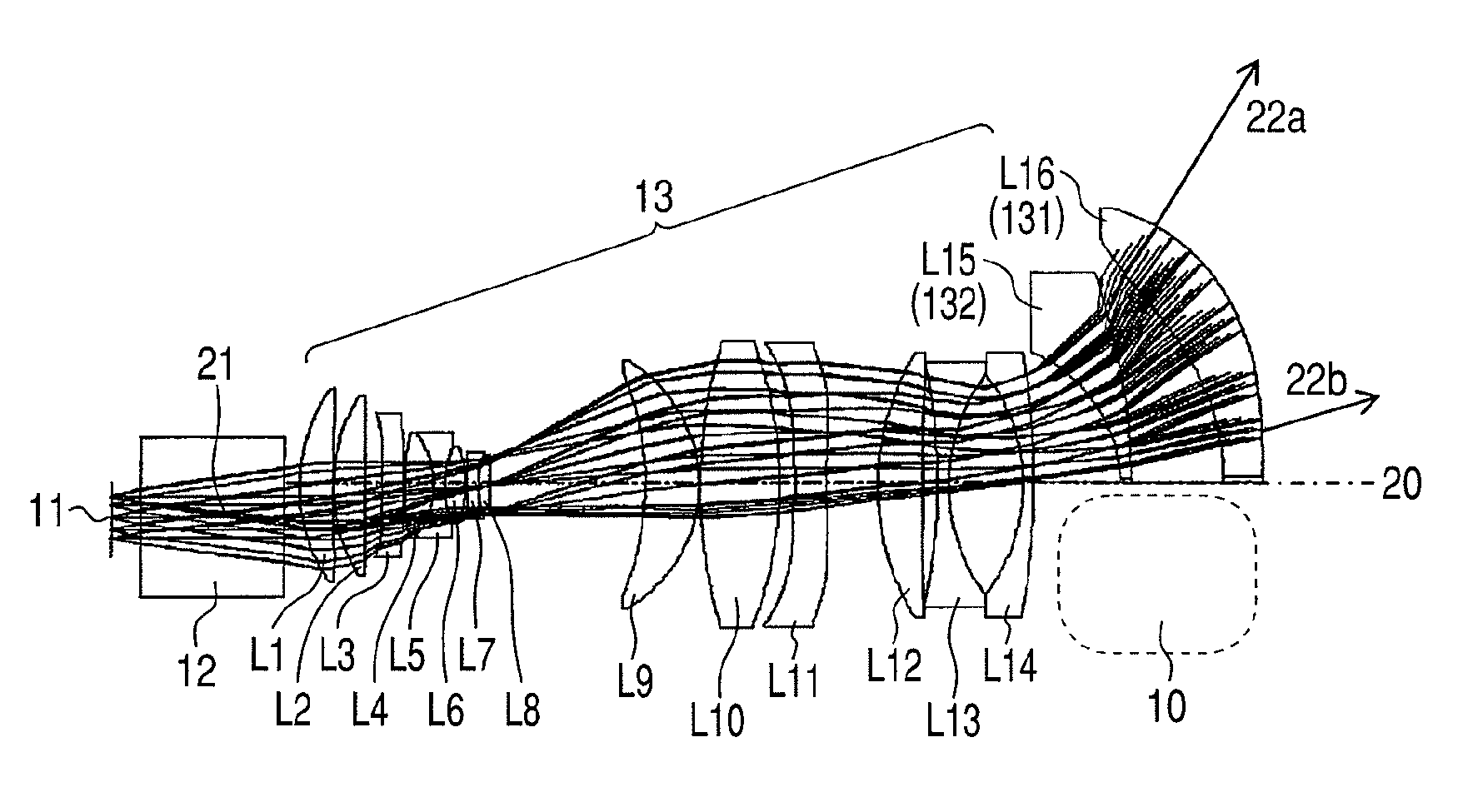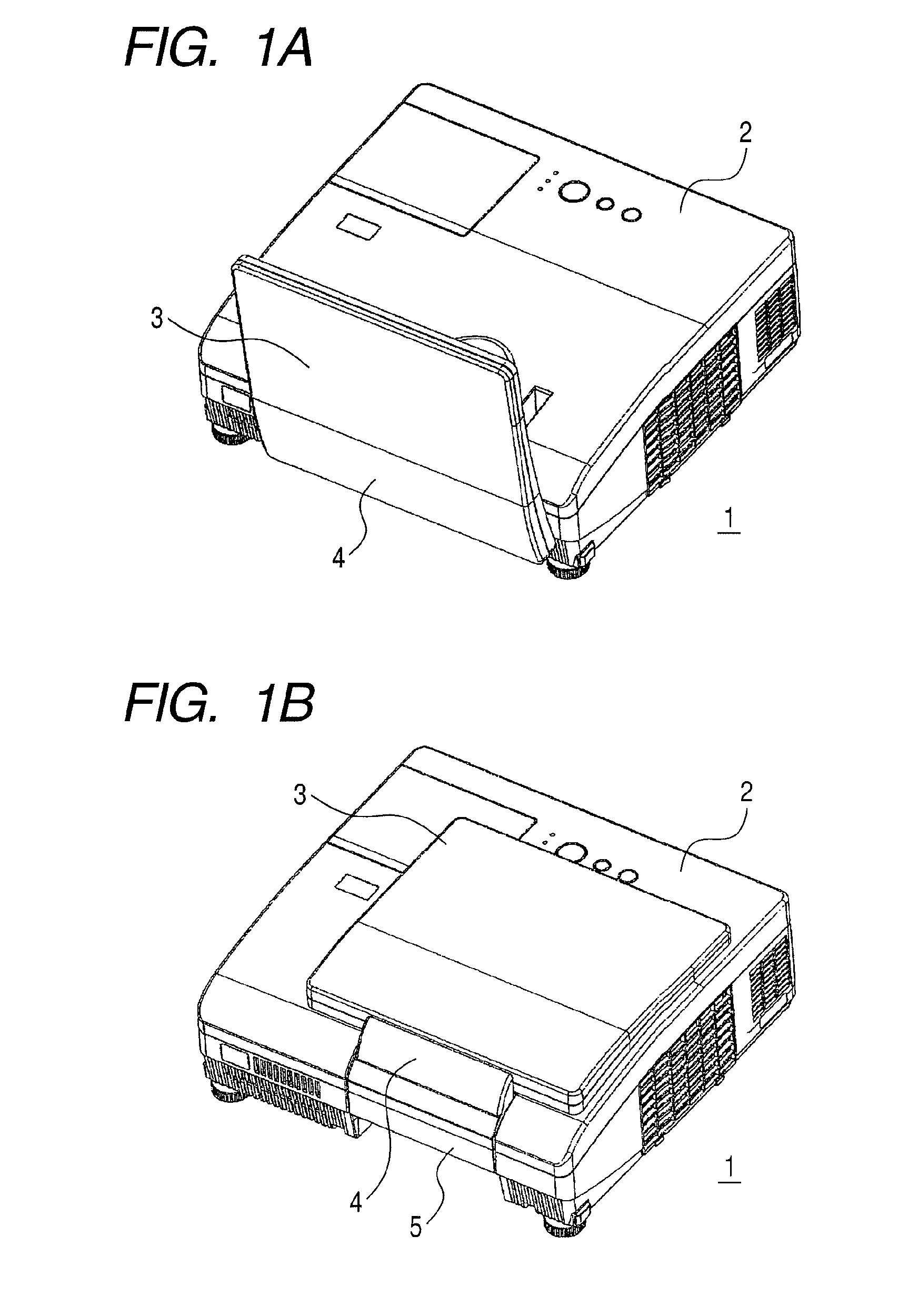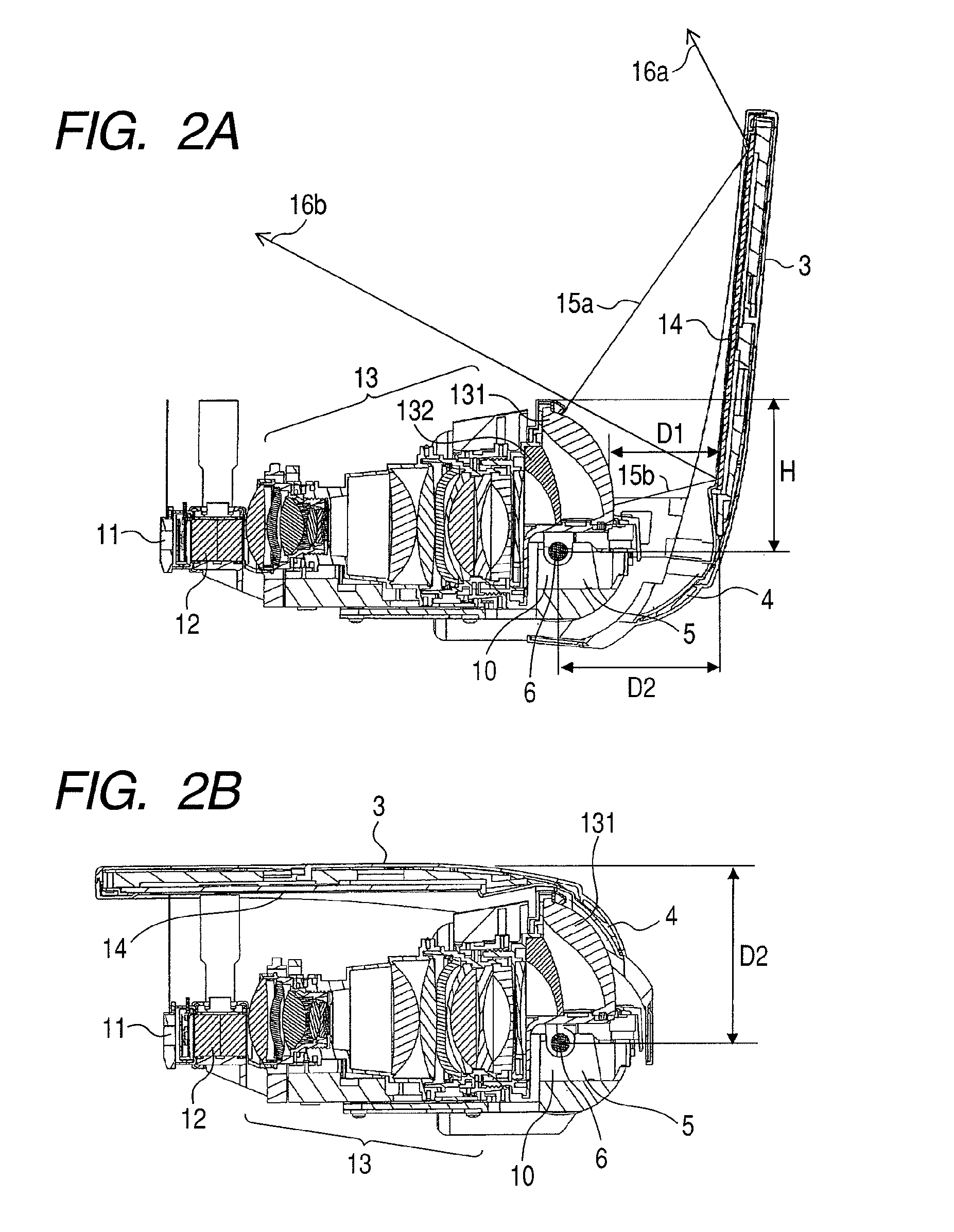Video projector which obliquely projects images onto screen
a projector and video technology, applied in the field of video projectors, can solve the problems of difficult reduction of the required torque for rotating the mirror, difficulty in reducing the size and weight of the video projector, etc., and achieve the effect of reducing the length of the arm of the mirror rotator, and reducing the size of the mirror
- Summary
- Abstract
- Description
- Claims
- Application Information
AI Technical Summary
Benefits of technology
Problems solved by technology
Method used
Image
Examples
Embodiment Construction
[0020]FIGS. 1A and 1B are perspective views of a video projector according to an embodiment of the invention. FIG. 1A illustrates the state of the projector when its reflective mirror is open, and FIG. 1B illustrates its state when the reflective mirror is closed.
[0021]The video projector 1 of FIGS. 1A and 1B uses the reflective mirror to obliquely project images formed in its image display element (e.g., a reflective or transmissive liquid crystal panel) onto a projection screen or board, thereby displaying the images in a magnified manner. The image display element can be a micro-mirror device in which multiple micro-mirrors are arrayed (e.g., Digital Micromirror Device: trademark of Texas Instruments, Inc.). A housing 2 houses main components such as an optical projection system, an optical illumination system, and circuitry components. Attached to the top side of the housing 2 is a mirror support plate 3 that supports the reflective mirror. The mirror support plate 3 is secured ...
PUM
 Login to View More
Login to View More Abstract
Description
Claims
Application Information
 Login to View More
Login to View More - R&D
- Intellectual Property
- Life Sciences
- Materials
- Tech Scout
- Unparalleled Data Quality
- Higher Quality Content
- 60% Fewer Hallucinations
Browse by: Latest US Patents, China's latest patents, Technical Efficacy Thesaurus, Application Domain, Technology Topic, Popular Technical Reports.
© 2025 PatSnap. All rights reserved.Legal|Privacy policy|Modern Slavery Act Transparency Statement|Sitemap|About US| Contact US: help@patsnap.com



